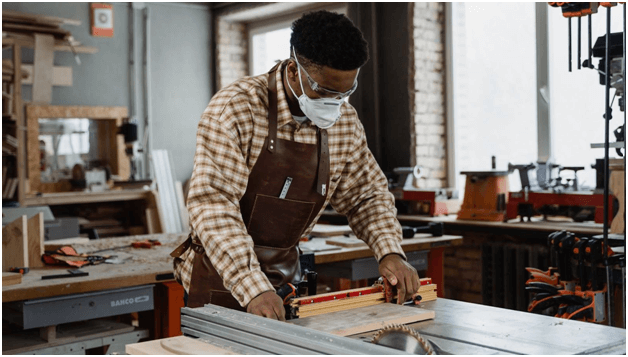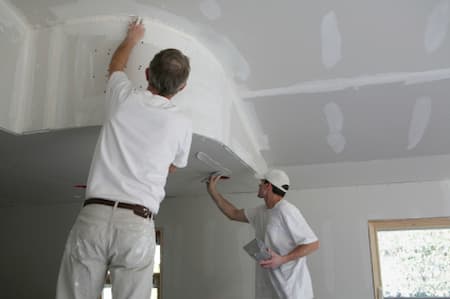Top-Rated Drywall Fort Worth Services for Residential Projects
Top-Rated Drywall Fort Worth Services for Residential Projects
Blog Article
Drywall Installation Facilitated: Tips for Perfect Outcomes
Drywall installment is commonly viewed as a daunting job, yet with the appropriate technique and understanding, it can end up being a manageable endeavor. Picking top quality materials and preparing the installation location are critical initial steps that set the structure for success. Grasping techniques for reducing, hanging, and completing drywall can significantly influence the result. As we explore these crucial ideas, you may locate that even the tiniest modifications in your approach can bring about incredibly improved results, leaving you to consider just how these practices can change your next job.
Choosing the Right Materials
Choosing the suitable materials for drywall installment is important to accomplishing a sturdy and aesthetically pleasing coating. drywall installation. The key element, drywall sheets, generally can be found in numerous thicknesses, with 1/2-inch sheets being standard for indoor wall surfaces. For locations calling for additional wetness resistance, such as washrooms or kitchens, think about making use of eco-friendly board or cement board, which are particularly made to withstand humidity

In addition, picking the ideal bolts-- either nails or screws-- is necessary for protecting the drywall to the framework. Drywall screws are normally favored for their holding power and decreased risk of standing out. Last but not least, take into consideration the complements such as guide and paint, which not only enhance the look yet likewise safeguard the drywall from moisture and wear.
Preparing the Installation Location
Before starting the drywall installation procedure, it is vital to prepare the installment area extensively. A clean office minimizes the danger of damage to existing products and permits for efficient motion throughout installation.
Following, examine the wall surfaces and ceiling for any flaws, such as cracks, holes, or mold and mildew. Address these issues in advance; spot any damages and enable enough time for repair work to completely dry. In addition, guarantee that electric outlets, buttons, and plumbing are correctly placed and made up, as this will affect drywall positioning.
Take into consideration the environmental conditions as well. A stable temperature and humidity level are vital for optimal adhesion and performance of the drywall materials. If necessary, use a dehumidifier or heater to create suitable problems.
Cutting and Hanging Drywall
The secret to efficient drywall installation depends on the precise cutting and dangling of the panels. Begin by gauging the room precisely, taking into consideration any obstructions such as electric outlets or home windows. Utilize a straight edge and an utility blade to rack up the drywall along your measurements, then break it along the racked up line for a clean break. For even more detailed cuts, such as around electrical outlets, a drywall saw can be used for precision.

Constantly work from the top down and entrusted to right, guaranteeing that you keep a staggered pattern to enhance stability. Effectively hanging the drywall sets the structure for a smooth coating, ultimately causing exceptional lead to your drywall task.
Taping and Mudding Methods
While correct cutting and hanging of drywall sets the phase, the following essential action entails mastering taping and mudding methods to make certain a seamless surface. Insulation is crucial for reinforcing joints and stopping splits; it involves embedding tape into the applied joint substance (mud) Beginning sheetrock repair fort worth with a top quality fiberglass or paper tape, applying the tape over the joint and pressing it into the wet mud utilizing a taping blade, making certain no air bubbles remain.
Once the tape is in location, apply a thin layer of joint compound over the tape, feathering the sides to produce a smooth change to the drywall surface area. Permit this layer to completely dry entirely prior to sanding it gently to remove imperfections. Repeat this process, applying additional coats of mud as necessary-- generally two to three coats-- while slowly broadening the application area with each layer to accomplish a seamless look.
After the final layer dries out, sand the surface area with a fine-grit sandpaper till smooth. drywall contractor. Remember to wear a mask throughout fining sand to stay clear of breathing in dust particles. Mastering these taping and mudding techniques is critical for achieving a professional-quality finish in your drywall setup
Finishing Touches for Perfection
Accomplishing a flawless drywall installment surpasses taping and mudding; it culminates in the finishing touches that boost the overall appearance. These last actions are vital in making sure a professional-grade surface that enhances the visual appeals of your space.
Begin by sanding the dried out joint compound to create a smooth surface area. Use a fine-grit sandpaper and a fining sand block or post sander for optimal control. Pay certain interest to edges and edges, as these locations have a tendency to require even more precise job. After fining sand, wipe down the wall surfaces with a damp towel to eliminate any dirt particles, making certain a clean surface area over at this website for painting.
Next, use a primer particularly designed for drywall. This step is essential, as it assists secure the joint compound and supplies a consistent base for the topcoat. As soon as the guide dries, check for Home Page any flaws, and repair as needed.
Final Thought
In conclusion, successful drywall installation hinges on the cautious choice of materials, complete prep work of the installment location, and specific implementation of reducing and hanging strategies. Proficiency of taping and mudding procedures is crucial for attaining a smooth coating.
Drywall installment is often regarded as a daunting task, yet with the right approach and knowledge, it can become a convenient undertaking.Picking the proper materials for drywall setup is crucial to attaining a sturdy and aesthetically pleasing coating.Prior to beginning the drywall setup procedure, it is crucial to prepare the installment location completely. Grasping these taping and mudding techniques is critical for attaining a professional-quality coating in your drywall setup.
In conclusion, effective drywall installment hinges on the careful option of materials, extensive preparation of the installment area, and precise implementation of cutting and hanging techniques.
Report this page